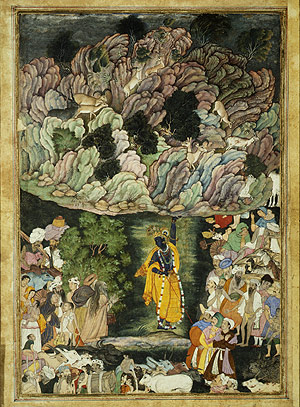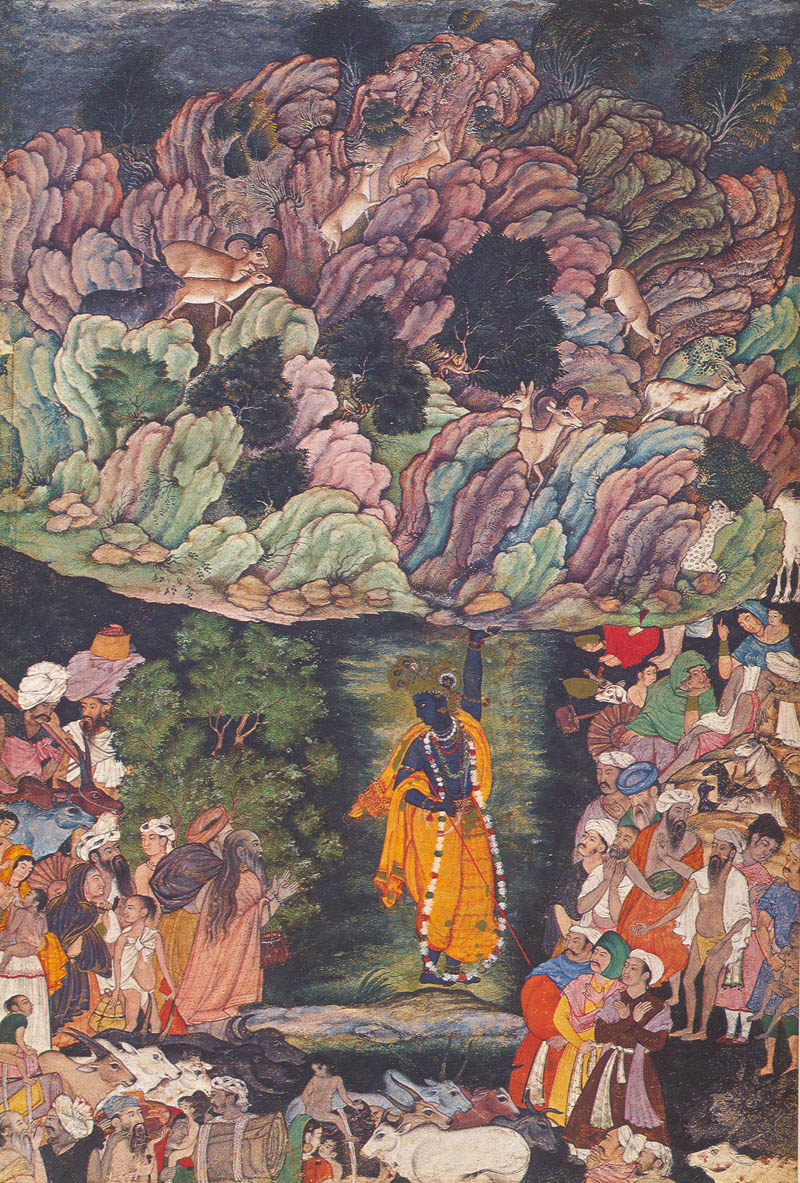

Krishna Govardhandhara, a miniature painting commissioned by Akbar (c.1590-95)
*CLICK HERE for the MET's own presentation*
Source: http://www.metmuseum.org/Works_of_Art/viewOne.asp?dep=14&viewMode=0&item=28%2E63%2E1
(downloaded Apr. 2004)
"Leaf from a Harivamsa Manuscript, The Legend of Hari (Krishna), Illustrated detached folio, ca. 1590-95; Mughal. Ink and colors on paper; 11 3/8 x 7 7/8 in. (28.9 x 20 cm). (28.63.1). Purchase, Edward C. Moore Jr. Gift, 1928. As part of his policy of reconciliation between Muslims and Hindus, Emperor Akbar (r.1556-1605) had the Hindu classics translated into the Persian language of the court and illustrated by his court artists. This painting is one of the finest results of his plans. The god Krishna protects the people of Braj against the destructive rain sent by the god Indra."
A much larger image of the same painting.

Krishna Govardhandhara, as commissioned by Akbar, attributed to Miskin
Source: Stuart Cary Welch, Imperial Mughal Painting. New York: George Braziller, 1978. Page P. 58, plate 10. FWP scan, August. 2001.
Comments by Stuart Cary Welch:
"To protect his followers from the wrath of the rival God Indra, who has conjured up a holocaust, Krishna lifts Mount Goverdhan like some huge umbrella. The villagers and their herds evoke today's India and must have been even more familiar to sixteenth-century viewers. Such pictures were intended by Akbar to explain Hinduism to his Muslim courtiers, and thereby instill them with religious toleration. The artist, therefore, has made every effort to lend credibility to the God's miracle.Amusingly, Akbar assigned one of his most orthodox Muslim men of letters to translate the Harivamsa --Badaoni, the author of the Muntakhabu-t-Tawarikh (Selections from Histories). Unlike Abu'l Fazl, whose Akbar-nama he must have considered pure propaganda, Badaoni strongly disapproved of Akbar's religious policies, and it is remarkable that the emperor suffered him so leniently. Inasmuch as Badaoni's Selections is a rich source of personal anecdote ("gossip"), it seems likely that the emperor found him as amusingly informative as we do.
With slight reservations, we assign this delightful painting, with its humorously characterized people and animals, to Miskin." (p. 60)
== Indian Routes index == Indian Routes sitemap == Glossary == FWP's main page ==